25 JUNE 2018
YOUR WORDS
Readers are invited to add their comments to any story. Click on the article to see and add.
BTN DISTRIBUTION
BTN also goes out by email every Sunday night at midnight (UK time). To view this edition click here.
The Business Travel News
PO Box 758
Edgware HA8 4QF
United Kingdom
info@btnews.co.uk
© 2022 Business Travel News Ltd.
Article from BTNews 25 JUNE 2018
ON TOUR: In awe of Loch Awe
On a much-delayed return to Scotland, Richard Cawthorne discovers plenty to admire in a small corner of Argyll
Loch Awe is Scotland’s longest, some 25 miles end to end, running roughly south to north and averaging more than half a mile wide. Farms and homes are scattered along its eastern edge, some with converted buildings, one of which was BTN’s base for this self-catering trip.
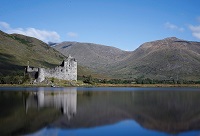 It was a get-away-from-it-all stay with no plans for anything strenuous like serious hiking or mountaineering. These are big attractions in the area and there was plenty of evidence around us of hardy souls doing both. But not having been to Scotland for some years, we settled for some gentle exploring by car and admiring the renowned scenery.
It was a get-away-from-it-all stay with no plans for anything strenuous like serious hiking or mountaineering. These are big attractions in the area and there was plenty of evidence around us of hardy souls doing both. But not having been to Scotland for some years, we settled for some gentle exploring by car and admiring the renowned scenery.
Its reputation is justified; despite relatively-recent developments, there is still a lot of wilderness in the country and early summer shows it at its best with huge tracts of green-clad or forested hillsides set off by the waters of the lochs, with Loch Awe a powerful example.
We drove north from Hertfordshire, overnighting at Carlisle, then skirting west of Glasgow, through Loch Lomond and on to Blarghour Farm, whose address is By Dymally, Argyll. In other words, no local town. Discovered and booked through the booking.com website, away from it all it certainly was, heightened by the fact it could be reached only via a single-track road. This had passing places at regular intervals and those in the know seemed happy and secure enough to tackle it at speed; strangers like us found it safer to be a bit more cautious.
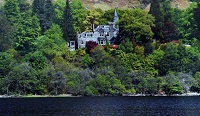 Just as well; we regularly met other vehicles coming the other way, from tractors and trucks to members of a German vintage car club out for a Sunday run. These half dozen or so cars, ranging from three Austin-Healey 3000s and a Jaguar E-type to a distinguished, very large and what looked like a 4.5litre 1929 "Le Mans" Bentley, were lovely to look at but squeezing by them needed care. From the farm, it was 10 miles east to the A819 and 14 miles west to the A816, the nearest main roads; the 14-mile leg was slightly wider and slightly straighter, but sufficient to say 14 miles in 33min was my best time.
Just as well; we regularly met other vehicles coming the other way, from tractors and trucks to members of a German vintage car club out for a Sunday run. These half dozen or so cars, ranging from three Austin-Healey 3000s and a Jaguar E-type to a distinguished, very large and what looked like a 4.5litre 1929 "Le Mans" Bentley, were lovely to look at but squeezing by them needed care. From the farm, it was 10 miles east to the A819 and 14 miles west to the A816, the nearest main roads; the 14-mile leg was slightly wider and slightly straighter, but sufficient to say 14 miles in 33min was my best time.
Our nearest main centres were Inveraray, 16 miles roughly south of us, and Oban, about 20 miles in the other direction. Once we were accustomed to the lane, there was plenty there and along the way to catch interest, starting with the view from our cottage of the loch and hills beyond. Local architecture and history can be found in the village of Lochawe at the end of the loch about three miles west of Dalmally, where the Scottish baronial-style St Conan’s Chapel built in 1883 is a centrepoint. There is also a railway station and steamer pier and, for those interested in industrial archaeology, Cruchan hydro-power station lies west of the town.
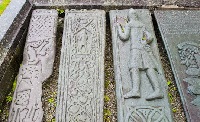 Back on the A816 and south of where we were staying is the village of Kilmartin. It stands at the head of Kilmartin Glen, famous for its rich archaeological legacy and according to Undiscovered Scotland the nearest the mainland has to offer to a “theme park” of ancient history. Not as trivial as it sounds: within six miles are more than 800 ancient monuments to explore, plus an intriguing parish church. The monuments include burial cairns, rock carvings and standing stones, the remains of the Dunadd fortress and stately Carnasserie Castle, just over a mile north and built between 1565 and 1572. The excellent Kilmartin Museum, shortly to be replaced by a more modern building, puts it all in context.
Back on the A816 and south of where we were staying is the village of Kilmartin. It stands at the head of Kilmartin Glen, famous for its rich archaeological legacy and according to Undiscovered Scotland the nearest the mainland has to offer to a “theme park” of ancient history. Not as trivial as it sounds: within six miles are more than 800 ancient monuments to explore, plus an intriguing parish church. The monuments include burial cairns, rock carvings and standing stones, the remains of the Dunadd fortress and stately Carnasserie Castle, just over a mile north and built between 1565 and 1572. The excellent Kilmartin Museum, shortly to be replaced by a more modern building, puts it all in context.
Further south, Inveraray is a popular tourist spot, crowned by its castle, the home of the Duke of Argyll, and still with a proper town centre. We had coffee at trendy Brambles café and bistro on Main Street and lunched at the comfortable Inveraray Inn on Front Street West before heading for the castle, impeccably maintained and full of historical artefacts relating to a very chequered family history.
On the way to Oban next day, we found the Loch Melfort Hotel, fronting the loch of the same name and boasting “the finest views on the west coast”. Family-run, it is a good pit stop and adjoins the 20-acre Arduaine Garden, run by the National Trust for Scotland and well worth exploring.
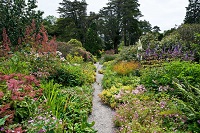 Oban, which we visited several times to stock up on supplies, is busier than Inveraray thanks to its status as a port as well as shopping centre. It is a gateway to the Hebridean islands, with the large Caledonian MacBrayne ferries much in evidence at the harbourside. Another dominant feature is McCaig’s Tower, which overlooks Oban Bay and is often compared to the Colosseum in Rome. Planned by a local businessman as a monument to his family but left uncompleted on his death, it is open to visitors willing to undertake a steep climb.
Oban, which we visited several times to stock up on supplies, is busier than Inveraray thanks to its status as a port as well as shopping centre. It is a gateway to the Hebridean islands, with the large Caledonian MacBrayne ferries much in evidence at the harbourside. Another dominant feature is McCaig’s Tower, which overlooks Oban Bay and is often compared to the Colosseum in Rome. Planned by a local businessman as a monument to his family but left uncompleted on his death, it is open to visitors willing to undertake a steep climb.
Outside town is the ruined Dunollie Castle, former seat of the Clan MacDougall whose history, along with that of Oban, can be explored at the nearby museum in a building dating from 1745. A more traditional tourist attraction is on nearby Loch Creran, in the shape of the Scottish Sea Life Sanctuary complete with aquarium and rescue centre.
As with other port towns, the Oban waterfront has been developed into an eating, drinking and shopping area. We ate at the neat but informal Fishouse (sic) overlooking the ferry terminal and on another visit at the Corryvreckan, a Wetherspoon pub named after the world’s third largest whirlpool. The pub is noted for its collection of cask ales and also does a decent lunch; the whirlpool lurks between the nearby islands of Jura and Scarba and can be visited by boat trips from local harbours including Oban or sightseeing flights from Oban Airport.
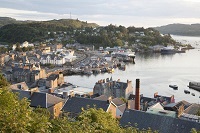 Outside the Wetherspoons is another local legend, The Original Green Shack, a seafood hut founded in 1990 by fisherman John Ogden as an outlet for the high-quality catches provided by local fishermen. Unprepossessing as it is, it boasts an international following, many of whom seemed to be there during our visits and clamouring for one of its famous platters.
Outside the Wetherspoons is another local legend, The Original Green Shack, a seafood hut founded in 1990 by fisherman John Ogden as an outlet for the high-quality catches provided by local fishermen. Unprepossessing as it is, it boasts an international following, many of whom seemed to be there during our visits and clamouring for one of its famous platters.
As ever with a short holiday, there was more to see and do on this trip than we had time for. Other highlights included a drive through mighty Glen Coe and a day trip with car via Caledonian MacBrayne ferry to the island of Mull, but we left a lot undone – more than enough to justify another trip. And I haven’t even mentioned the whisky.
www.undiscoveredscotland.co.uk
OUR READERS' FINEST WORDS (All times and dates are GMT)
All comments are filtered to exclude any excesses but the Editor does not have to agree with what is being said. 100 words maximum
